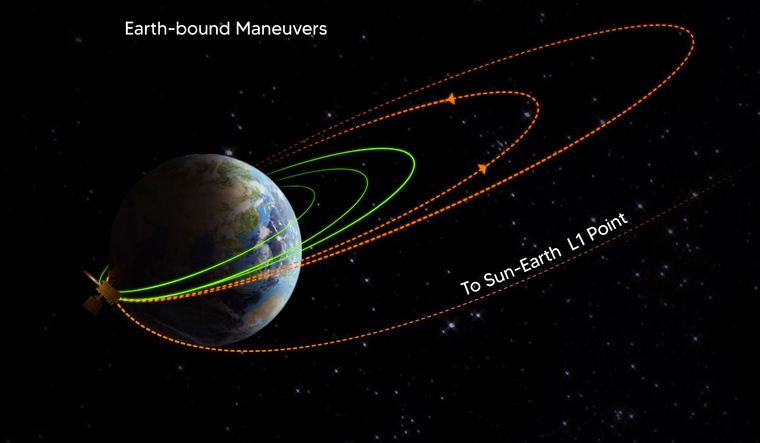The Indian Space Research Organisation's (ISRO) solar misson, Aditya-L1, underwent a successful third earth-bound manoeuvre on Sunday.
Taking to X (formerly Twitter) ISRO said that the its ground stations at Mauritius, Bengaluru, SDSC-SHAR and Port Blair tracked the satellite during this operation.
ISRO also added that the next manoeuvre is scheduled on September 15.
Aditya-L1 Mission:
— ISRO (@isro) September 9, 2023
The third Earth-bound maneuvre (EBN#3) is performed successfully from ISTRAC, Bengaluru.
ISRO's ground stations at Mauritius, Bengaluru, SDSC-SHAR and Port Blair tracked the satellite during this operation.
The new orbit attained is 296 km x 71767 km.… pic.twitter.com/r9a8xwQ4My
ISRO's Telemetry, Tracking and Command Network (ISTRAC) carried out the operation.
The first earth-bound manoeuvre was performed successfully on September 3, while the second was on September 5. Before placing in the transfer orbit towards the Langarange point L1, the spacecraft will undergo one more earth-bound manoeuvre.
It was on September 2 India's maiden solar mission, Aditya-L1 was launched from Sriharikota in Andhra Pradesh. The aim of the mission is to study the sun's outer atmosphere.
According to ISRO, Aditya-L1 will stay approximately 1.5 million km away from Earth, directed towards the sun which is about one per cent of the Earth-sun distance. It will neither land on the sun nor approach the sun any closer.
The seven scientific payloads carried by Aditya-L1 will observe the photosphere, chromosphere and the outermost layers of the sun using electromagnetic particle and magnetic field detectors.
Last week, ISRO had shared a selfie and images of earth and its natural satellite captured by Aditya-L1. The VELC (Visible Emission Line Coronagraph) and SUIT (Solar Ultraviolet Imaging Telescope) payloads could be spotted in the selfie shared by ISRO. SUIT will examine the various layers of the solar atmosphere using shorter UV wavelengths that will provide crucial information on problem of coronal heating, dynamics of space weather, coronal mass ejection and so on.
ISRO had announced earlier that the spacecraft is expected to arrive at the intended orbit at the L1 point after about 127 days of launch.
According to scientists, between the earth and sun, there are five Lagrangian points where a small object tends to stay put. A spacecraft can remain in the Lagrangian points with reduced fuel consumption.
At a Lagrange point, the gravitational pull of the two large bodies (the Sun and the Earth) equals the necessary centripetal force required for a small object to move with them.


